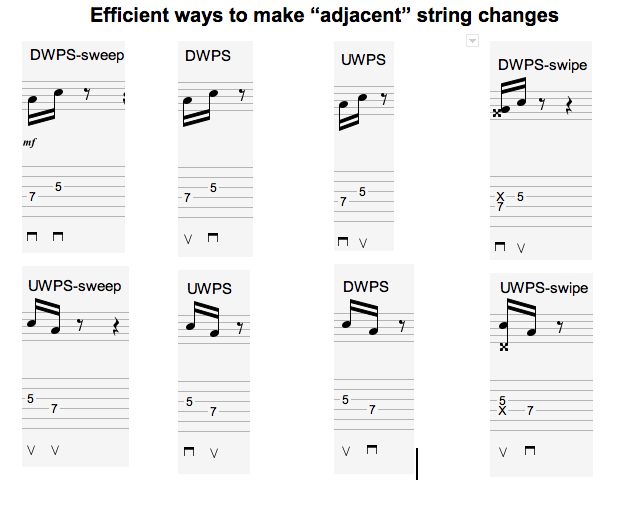Have toyed with this thing for a while. I have a personal interest taking in a lot of information and then trying to condense it down to a tiny presentation. Also, more specifically, CTC stuff has made me think of picking techniques as ‘note-by-note’ issues, that is, how do we play the next note? Because, and I know this may be a simplification, often the issue with CTC principles really comes down to a transition to one note from another, not something specific about a group of three or more notes.
If we can master a ‘note to note’ movement it’s likely just an issue of building up endurance and comfort with that movement. Or something. Just things I think about, trying not to make this post too long.
So here we’re just looking at adjacent strings, first row is all ascending and second row is all descending. We’re assuming that we’re going to pick every note, as opposed to hybrid or any slurring (or tapping or hammers from nowhere.) So we have these options, then there’s hopping and bouncing, and there’s efficient crosspicking which I guess hypothetically solves all picking problems.
Anybody get what I’m driving at here? I give this chart to students sometimes, of course accompanied by a lot of discussion and explanation.
Edit: seemed to be a misunderstanding in the first few replies that I’ll try to tackle here: What I’m trying to promote or show isn’t a notational system but rather looking at every possible way you can efficiently do a string change with slanting principles.



 )
)